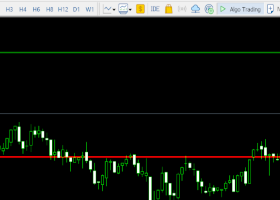USD/CAD: Canadian foreign trade deficit is expected to grow
As reported by the US Department of Commerce on Wednesday, orders for manufactured goods in February rose by 1.2% (after falling by -1.3% in January). New orders for durable goods in February rose by 3.0% compared with the previous month.
Activity in the US services sector also grew in March. The Institute for Supply Management (ISM) said on Wednesday that the Purchasing Managers Index (PMI) for the US non-manufacturing sector in March was 58.8, compared to 59.5 in February. Despite the relative decline, this is a strong indicator; Index values above 50 indicate an increase in activity.
Employment in the private sector of the US in March grew stronger than forecast. According to the submitted Automatic Data Processing Inc. (ADP) data, the number of jobs in the private sector increased by 241,000 in March (the forecast was +205,000).
The ADP report precedes the official data on the number of jobs outside of US agriculture, which will be presented on Friday by the Ministry of Labor. Economists predict that the data will show an increase in the number of jobs in March by 190,000 after an increase of 313,000 in the previous month.
The dollar and US stock indices reacted positively to this information and rose in the second half of the US session on Wednesday. Today, the growth of the indices and the dollar continues.
The dollar is also being helped by the easing of the anxiety about trade wars between the US and China after the countries imposed restrictions on trade in goods with an aggregate value of about $ 100 billion.
On Wednesday, concern about trade wars began to weaken, as representatives of both economic superpowers were ready for negotiations.
The response tariffs on imports of a number of American goods, which China threatens to accept after the introduction of duties in the US, led to a new phase in intensive negotiations on new trade relations.
In recent days, there has been a strengthening of the Canadian dollar against the US dollar, including due to favorable expectations regarding the future agreement on NAFTA.
Nevertheless, the Canadian dollar remains vulnerable against data indicating a slowdown in Canadian economic growth, which calls into question the probability of an increase in the Bank of Canada's key interest rate in the coming months. The Canadian economy grew by 3% in 2017, which is the fastest rate among the G7, and inflation in February increased to the highest level in the last three years. However, other data indicate that the economy lost its upward momentum in early 2018.
Concerns about international trade and the high debt burden of consumers are likely to deter the Bank of Canada from raising rates during the first half of this year.
"We all know that interest rates are low, and this suggests that in a more normal period they would be higher than today", said Bank of Canada Governor Stephen Poloz at a press conference in mid-March. "But the transition to this is a very gradual process", he added.
Today at 12:30 (GMT) data on Canada's foreign trade balance for February will be published. The deficit of the foreign trade balance is expected to grow to -2.00 billion Canadian dollars, down from -1.91 billion Canadian dollars in the previous month. This is a negative factor for the Canadian dollar, and when the forecast is confirmed, CAD will decline.
*)An advanced fundamental analysis is available on the Tifia Forex Broker website at tifia.com/analytics
Support levels: 1.2770, 1.2740,
1.2700, 1.2600, 1.2520, 1.2430, 1.2360, 1.2260, 1.2170, 1.2100, 1.2050
Resistance levels: 1.2830, 1.2940, 1.3000, 1.3130

Trading Scenarios
Sell Stop 1.2730. Stop-Loss 1.2840. Take-Profit 1.2700, 1.2600, 1.2520, 1.2430, 1.2360, 1.2260, 1.2170
Buy Stop 1.2840. Stop-Loss 1.2730. Take-Profit 1.2940, 1.3000, 1.3130
*) For up-to-date and detailed analytics and news on the forex market visit Tifia Forex Broker website tifia.com
![[$9,496] in 5 Days Using 'Supply Demand EA ProBot' (Live Results) [$9,496] in 5 Days Using 'Supply Demand EA ProBot' (Live Results)](https://c.mql5.com/6/965/splash-preview-761070-1740062258.png)

